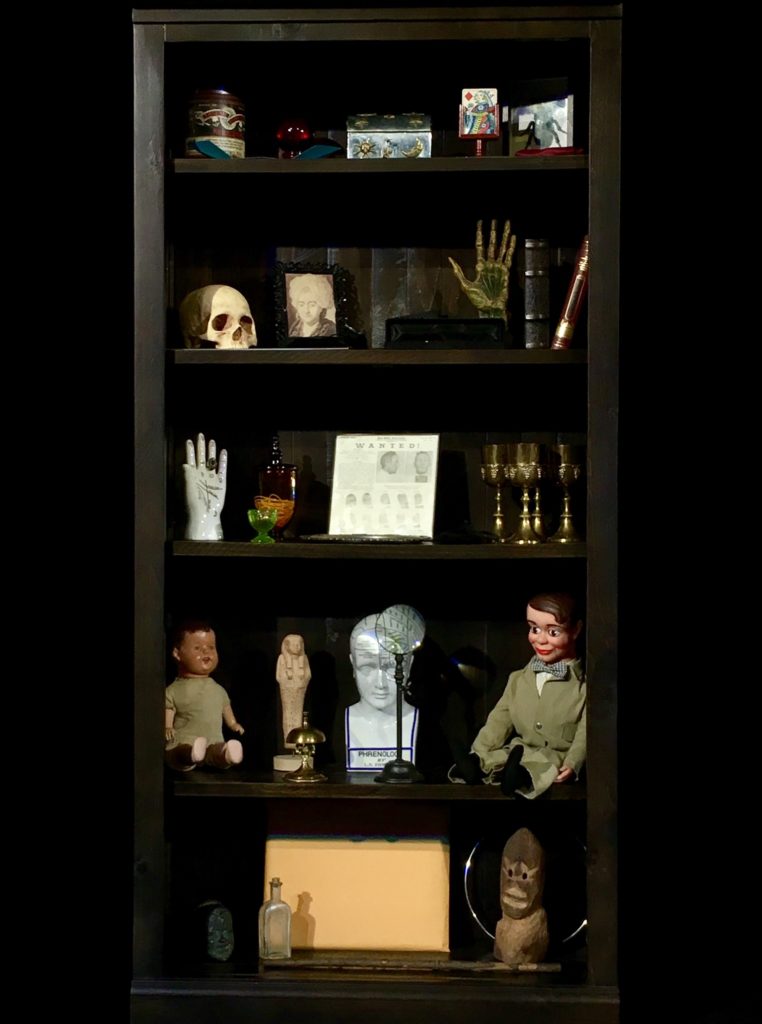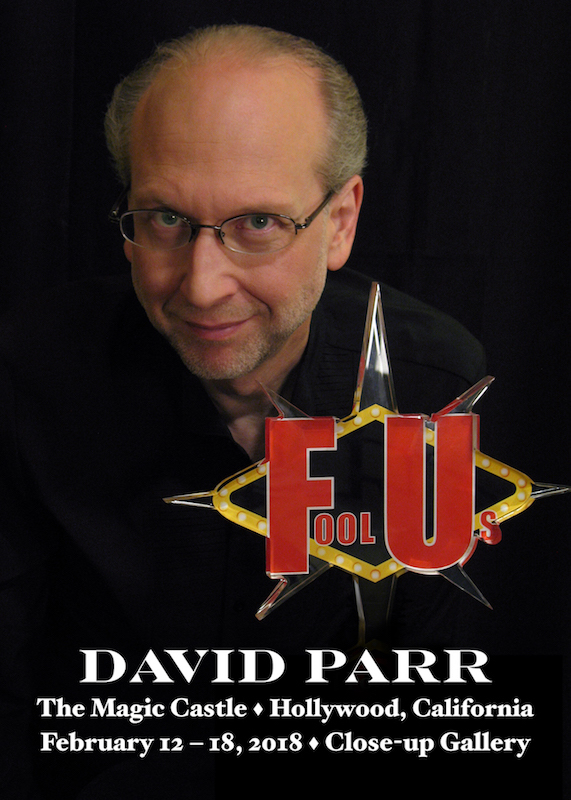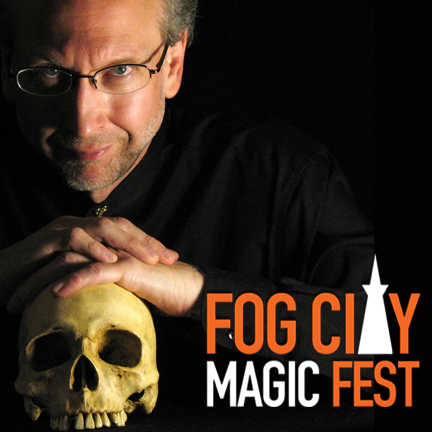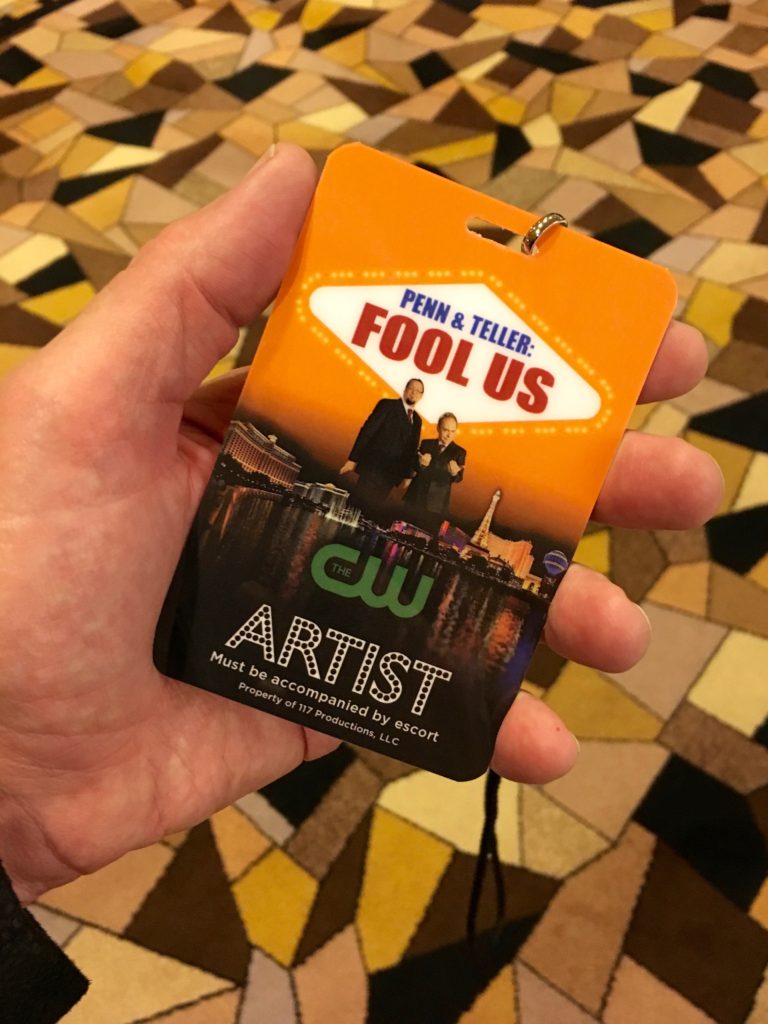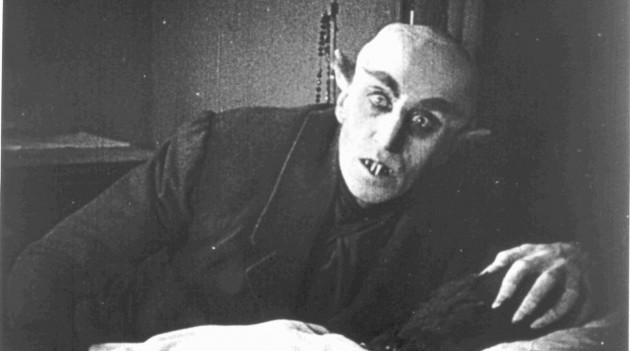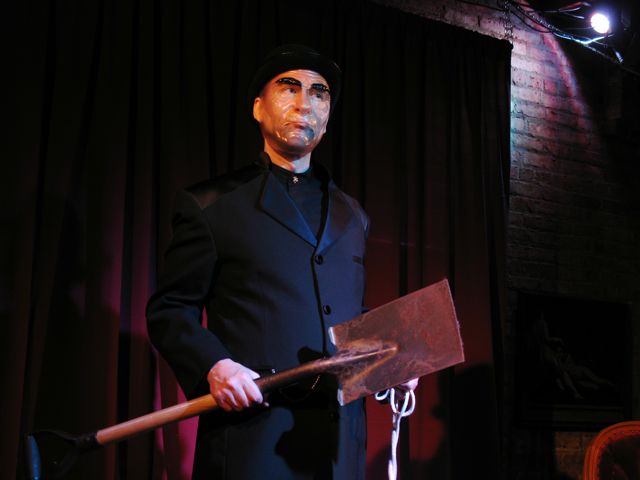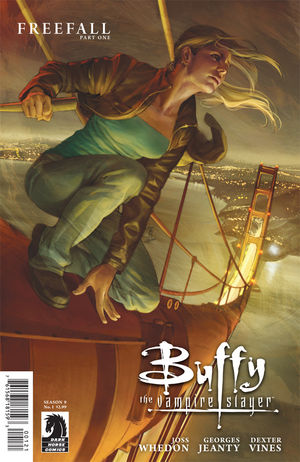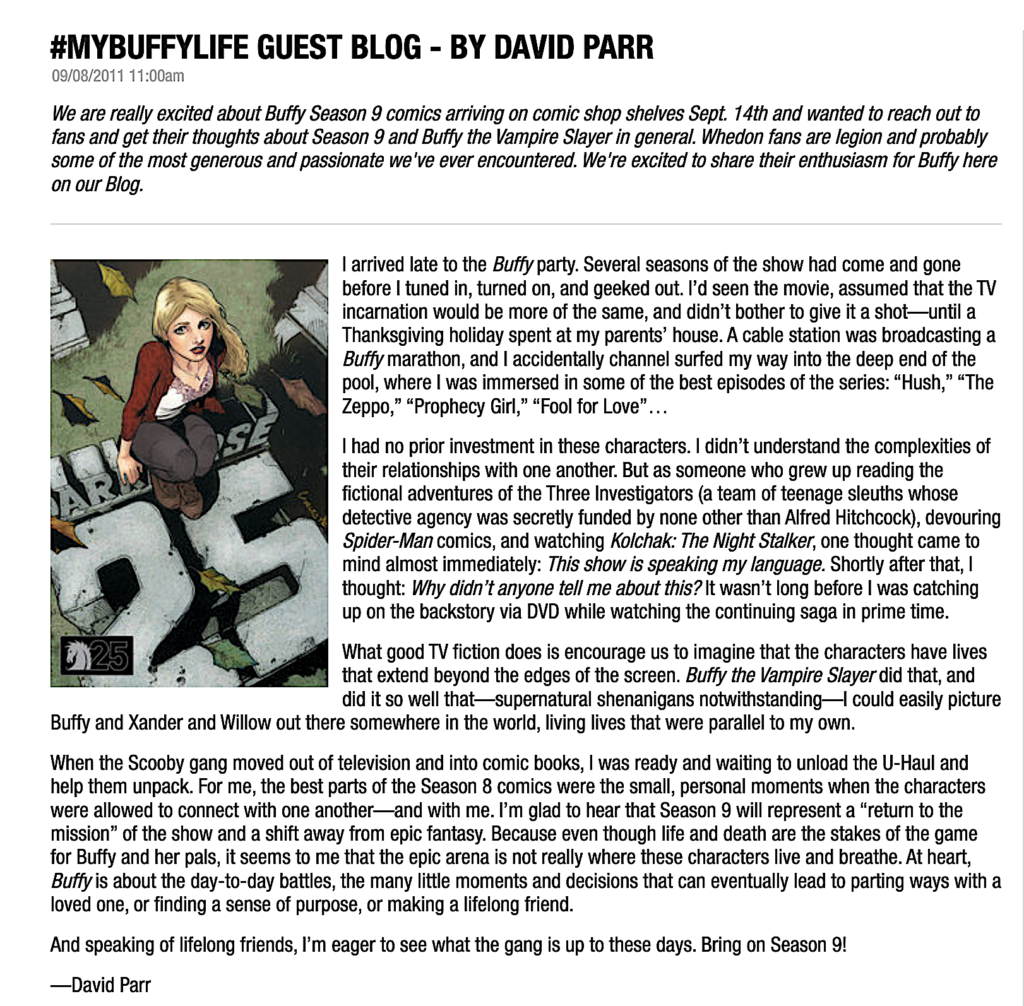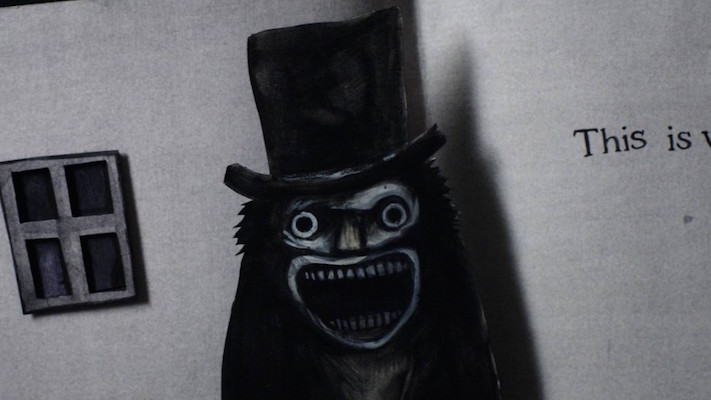
A recent viewing of the film The Uninvited, starring Ray Milland and Ruth Hussey, made me think about haunted house movies in general. I’ve been fascinated by spooky movies ever since I was a kid, back when even a rather tame episode of Night Gallery could give me nightmares for a week. In retrospect, I realize that watching those movies provided an education in the effective use of atmosphere, sound, and imagery. The haunted house subgenre has, on both a conscious and an unconscious level, provided plenty of inspiration for my magic.
Haunted house movies concern spooky goings-on within a particular home or building. The Frighteners, Sleepy Hollow, The Ring, A Nightmare on Elm Street, and The Sixth Sense are all good movies and they’re all about spirits of the dead returning to haunt the living, but I don’t think of them as haunted house movies, because their focus is not on a discrete home or structure. And although The Exorcist and Paranormal Activity are about demonic possession rather than ghosts, with the implication that the supernatural phenomena would follow the possessed or cursed individuals no matter where they lived, these movies are so powerfully associated with place — that staircase, this bedroom, that basement or attic — that they might as well be haunted house movies. I’m sure some movie aficionados would disagree, and that’s all well and good; it’s fuel for discussion over a pint of beer or blood or whatever. (Topic for further discussion: Why do the titles of haunted house movies almost always begin with the word “The”?)
So, with all that in mind, here is a list of some of my favorite haunted house movies:
The Innocents (1961). This adaptation of Henry James’s story “The Turn of the Screw” is my all-time favorite haunted house movie. So much of it is accomplished by implication and atmosphere, subtlety and suggestion. Deborah Kerr plays a woman who accepts a job as governess to a pair of children who live in a manor house that holds more than its share of secrets and tragedy. Kerr’s performance is amazing, as is that of the two kids. The movie is now available in high-definition video, so viewers can fully appreciate the beautiful black-and-white cinematography.
The Haunting (1963). Based on Shirley Jackson’s story “The Haunting of Hill House,” this is perhaps the archetypal haunted house movie. The opening shots and narration establish the house itself as a character. Julie Harris and Claire Bloom are awesome. It’s a solid adaptation of the story, with excellent use of low-tech effects and camerawork. Avoid even glancing in the direction of the worthless 1999 remake; it will rob you of your will to live.
The Others (2001). A movie strongly influenced by The Innocents, with many similar elements — a young brother and sister, a new governess, a manor house, and great performances by the entire cast, including the two kids. This movie is evidence that Spanish filmmakers have mastered the task of conveying a sense of the otherworldly in ways that Hollywood just doesn’t seem to understand. Further evidence is provided by the following film…
The Orphanage (El Orfanato, 2007). An old orphanage, an abandoned lighthouse, a dank cave, a trail of seashells, a kid who wears a creepy sackcloth mask — these are a few of my favorite things, especially when they’re combined in a mystery-thriller with supernatural overtones. This movie has plenty of eerie scenes and some real gut-punch moments, but it’s also a surprisingly touching story. The Orphanage was co-produced by Guillermo del Toro, who wrote and directed a film that’s also set in a haunted orphanage…
The Devil’s Backbone (El Espinazo del Diablo, 2001). Near the end of the Spanish Civil War, a boy is dropped off at an orphanage. Although the boy gets along well with the headmistress and his teacher, there are some unsettling aspects to his new home: a caretaker with a mean streak; a huge unexploded bomb that rests in the center of the school’s courtyard; and the ghost of a boy who lived — and died — at the school. This is one of del Toro’s personal movies, the ones he makes in-between big Hollywood projects. It’s a great little ghost story and, like all of del Toro’s work — although some credit must also go to his friend and cinematographer Guillermo Navarro — it’s beautiful to look at.
The Grudge (2004). In some circles, the following statement is considered to be heresy: I prefer the US remake over of the Japanese original, Ju-On. I can’t argue that one is better than the other; it’s just a personal preference. The Grudge portrays a haunting as a kind of viral curse that infects a house and then poisons the life of everyone who sets foot in it. I was caught off guard by this movie. Something about the sounds and images in it really got under my skin, and I had a couple of nights of creepy, disturbing dreams that woke me up at odd hours. I hadn’t experienced that in a loooooong time. I’m not sure what nerve-center this movie got to in my brain, but it was definitely the part that remembers what it’s like to imagine The Thing Under The Bed.
The Evil Dead (1981). Technically a demonic possession movie, it’s also an exemplary “spooky cabin in the woods” movie. The Evil Dead bent my mind when I first saw it, a few years after I graduated from high school. I’d never seen anything like it — a carnival dark ride, somehow captured on film. And after all these years, its handmade, low-budget charm remains intact. Gory, hilarious, startling, over-the-top, innovative, and wacky are just some of the adjectives I’d use to describe The Evil Dead. (I can’t list this film without also mentioning The Cabin in the Woods, in which masterminds Joss Whedon and Drew Goddard take all the conventions of this genre, pack them with illicit fireworks purchased on the edge of town, and gleefully blow them up.)
The Exorcist (1973). Let me tell you about the first time I saw this movie. My parents had wisely prevented me from seeing it when I was a kid, so I finally saw it in the student union of the University of Wisconsin during my first year of college. When the movie reached the dream sequence in which Father Karras sees brief, almost subliminal flashes of Captain Howdy’s demonic visage, the film got stuck, fixed on a frame of that horrible face, and then the projector broke. After an hour, most of the audience gave up and left, but a few die-hard folks stuck around until a different projector was located and we could finish watching the movie. And you know what? I’m glad it happened that way. It was a memorable experience, and the wait was so worth it.
Paranormal Activity (2007). I know, I know — some people despise the Paranormal Activity movies. While I admit that the law of diminishing returns kicked in a while back, I’m a fan of the first few entries in the series. It seems to me that they’re structured very much like magic shows, with each “effect” calculated to tease viewers and draw us in for a goosebumpy reveal or a big “gotcha” moment. And there’s something very appealing — to me, anyway — about the idea of unleashing occult weirdness on the bland suburban McMansion.
The Shining (1980). Love it or hate it — Stephen King, author of the novel on which it was based, hated it — there’s no arguing with the fact that Kubrick’s film adaptation of this story is loaded with iconic imagery, indelible performances, and quotable dialogue. Like Hill House, the Overlook Hotel is a character in the drama. There’s no forgetting the brightly patterned carpet, the blood-drenched elevator, the hedge maze, or the door to room 237. I saw The Shining in the theater when it was first released, and many people seemed to express disappointment that the movie departed significantly from the book. (Everyone I knew had read the book.) I remember thinking that it was the weirdest big-budget mainstream movie I’d ever seen.
A Tale of Two Sisters (Janghwa, Hongryeon, 2003). This Korean film plays as a kind of twisted modern fairy tale, complete with a wicked stepmother. Two young sisters return home from an extended hospital stay, only to find that the household is now ruled by an icy, domineering woman who seems to have their father under a spell. It soon becomes apparent that something very bad happened in this house, and the repercussions of that event have taken ghostly form. Tension hangs over every scene, even an innocent dinner party, and the supernatural can impinge on everyday reality at any moment. The plot is revealed, piece by piece, in a deliberately disorienting way. But it all fits together at the end, when we can step back and see the big picture. Don’t bother with the 2009 Hollywood remake, which borrows the title of a classic haunted house movie, The Uninvited, and includes unnecessary alterations to the plot.
The Uninvited (1944). This movie holds the distinction of being one of the first Hollywood productions to portray ghosts as something other than a gag or a hoax. Unavailable on video until very recently, it gained a reputation as a little-known classic. Criterion has given it the full treatment — digital restoration, remastering, and a release on blu-ray. The movie looks great, lots of atmospheric lighting and deep shadows. There’s a nifty séance scene, and a couple of creepy moments that would have freaked me out if I’d seen this movie when I was a kid. Viewers of a certain age will no doubt enjoy seeing Batman’s butler, Alan Napier, turn up in a supporting role. Also on the disc are two radio drama versions of the story, and a short documentary or “visual essay” about the film. (The info about Gail Russell, the ingenue in the film, is soooo sad.) The accompanying booklet includes an interview with the director, Lewis Allen. While The Innocents is still my favorite haunted house movie, The Uninvited is a noteworthy entry in the genre and is well worth seeing, especially in this lovely hi-def edition.
I have two new additions to this list of favorites:
Housebound (2014). This little indie movie from New Zealand is the debut effort of writer-director Gerard Johnstone — and an impressive debut it is. The tone of the movie is similar to Shaun of the Dead or Peter Jackson’s early work, in that it’s very funny but also has some genuinely creepy and tense moments, along with plenty of handmade charm. Quick spoiler-free plot synopsis. A sullen, contemptuous young woman named Kylie is caught committing a crime and is sentenced to house arrest under the supervision of her mother and stepfather. Mom is convinced that the house is haunted, but Kylie thinks her mom is just being dopey — until some weird, inexplicable stuff happens and hijinks ensue. I suppose this film would be classified as a “horror comedy,” but I’m wary of that categorization because it usually includes dumb, pandery stuff like the Scary Movie franchise. Housebound, like Dead Alive and Shaun of the Dead, demonstrates that a genre mashup works best when it’s done with sincerity.
The Babadook (2014). This Australian flick received a limited theatrical run in the US and is scheduled for release on video in April 2015. It’s a horror film done right: lots of atmosphere, fully developed characters, a simple and clear story — almost a fable — and carefully limited use of special effects. I’d say that the spiritual twin of this movie is The Innocents, and like that film, The Babadook can be seen as a straight-up haunted house movie or it can be interpreted from a non-supernatural angle. Magic, in the sense of sleight of hand and in the fairy-tale sense, plays an important part in the story. George Méliès even makes a brief appearance. A couple of moments in this movie were chilling enough to raise goose bumps on my arms, and that doesn’t happen very often. The two lead actors put in great performances, the art direction is top notch, and bibliophiles of the bizarre type will wish that their bookshelves were occupied by the creepy pop-up book that is the centerpiece of the film.
